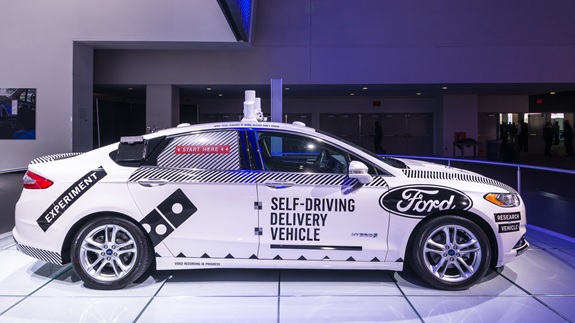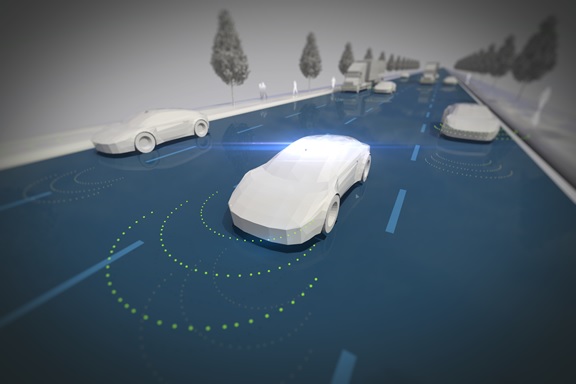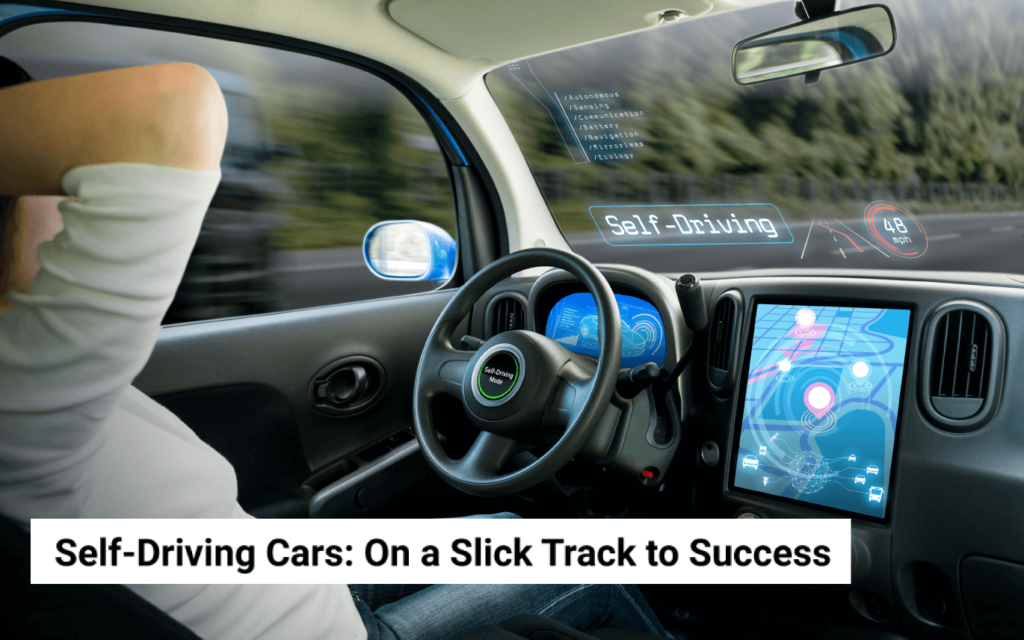It’s a high-speed race with a fast groove – way too soon to know who will be King. Ford, GM, Telsa, and Waymo are running tail to nose. Uber is kicking up dirty air. Like the Million Dollar Bill – a name given Bill Elliot, the first driver to win three out of four wins on the major speedways of NASCAR – the self-driving car race is inevitable and disruptive. The technology is, too. Apple CEO Tim Cook rightfully calls the self-driving car the mother of all AI.
According to Brookings (October 2017), more than $80 billion and counting has been invested in the autonomous vehicles industry. In fact, Brookings states, “Investment in self-driving cars appears to be the leading edge for AI development.” Ford, GM, Waymo (the self-driving unit of Alphabet, Google’s parent company), Uber and Telsa are revving up innovation and employing full-on testing and technologies that are rapidly changing the way we think about motorin’. The U.S. Congress is making up time, holding hearings and introducing legislation to pump the brakes until the feds and States can “address the incompatibility of old regulations written before the advent of self-driving vehicles” (Congressional Research, 9/2017). But, States like running their own streets.

And so, Ford is bringing two types of robot cars to Miami – research vehicles and self-driving delivery cars. Ford will also test its Transportation Mobility Cloud in the city. Ford has invested 7% of its total workforce into the Smart Mobility Group – and it is paying off. However, instead of consumer vehicles, most of Ford’s efforts are concentrated on commercial transportation. But, at any time, it just may be effortless for Ford to transfer its technology to the consumer market.
GM has tested its vehicles in California, Michigan, and Arizona. In 2016, GM had driven 9,668 miles with a 34-mile disengagement rate (where humans take control). Last year, GM showcased the autonomous Chevrolet Bolt in San Francisco. The company developed its technology through its subsidiary Cruise Automation. In the coming years, General Motors autonomous vehicles will not have any steering or pedals. Thinking ahead, GM launched a car-sharing service called Maven – in part to offset any revenue loss between traditional and autonomous car purchases. GM is planning to deploy driverless cabs by 2019. In January 2018, GM submitted a petition to the US Department of Transportation (USDOT) to seek permission for its driverless fleets.

Waymo, a top contender from the beginning for self-driving cars technology, has 5 million self-driven miles under its belt. Waymo is testing in Phoenix, Arizona and planning on starting a driverless ride-sharing app in California. Waymo is the first self-driving car company to deliver a safety report to the U.S. Department of Transportation. The company has reached a deal with Fiat-Chrysler to buy thousands of Chrysler Pacifica minivans for its driverless, ride-hailing service to be launched later this year. In addition to the Pacifica, Waymo has tested self-driving technology with the Toyota Prius, Audi TT, and Lexus RX450h. Waymo uses Light Detection and Ranging (LiDaR) – a key component of self-driving cars that helps them see the environment. The system is at SAE level 5 autonomy. But, even after Waymo’s technology is ready, the company may face challenges in creating a sustainable business model since Waymo is not a professional car company and does not have expertise in manufacturing cars.
Waymo’s success will depend on its ability to market its technology – and that may be more than enough.
Uber is also a player and stakeholder in the automobile market and the self-driving field. In 2016, it had driven more than 1 million miles. However, Uber has both legal and public perception issues. Uber had been sued by Waymo for copyright infringement of LiDar technology until the suit was recently settled. Uber was also involved in a fatal self-driving crash that killed a pedestrian in Phoenix.
Jaguar Land Rover is also taking its self-driving cars to the streets – testing in the UK – with British politicians committed to supporting a market estimated to be worth “1.2 trillion by 2025,” according to Digital Trends.
At home and abroad – in China, Europe, the UK, and the US – the field is hot – among major and minor racers. And States like Arizona, Florida, Tennessee – and yes, Michigan – are driving the slick track to success – with the federal government in slow-motion pursuit.
References:
https://www.theverge.com/2018/1/16/16893452/detroit-auto-show-2018-google-gm-waymo-ford-tesla
https://www.fastcompany.com/40516928/gm-is-leading-the-self-driving-car-race-while-tesla-lags-far-behind-report-says
https://www.navigantresearch.com/research/navigant-research-leaderboard-automated-driving-vehicles
https://arstechnica.com/cars/2018/01/why-analysts-put-gm-and-waymo-far-ahead-of-tesla-in-driverless-car-race/
https://www.zdnet.com/article/dossier-the-leaders-in-self-driving-cars/
http://www.businessinsider.com/the-five-leaders-in-the-self-driving-car-race-2018-1
https://www.sae.org/
https://driverless.wonderhowto.com/news/definitive-guide-levels-automation-for-driverless-cars-0176009/
https://www.techrepublic.com/article/general-motors-to-roll-out-fleet-of-self-driving-taxis-by-2019-ahead-of-ford-uber-and-waymo/
https://www.techrepublic.com/article/general-motors-to-roll-out-fleet-of-self-driving-taxis-by-2019-ahead-of-ford-uber-and-waymo/
https://www.greentechmedia.com/articles/read/report-ranks-tesla-last-for-automated-driving#gs.tUFhsbk
https://www.wired.com/story/uber-waymo-lawsuit-settlement/
https://www.nytimes.com/2018/03/23/technology/uber-self-driving-cars-arizona.html
https://www.wired.com/2016/01/maven-gms-car-sharing-scheme-is-really-about-a-driverless-future/
https://www.wired.com/story/self-driving-cars-disengagement-reports/
https://www.investors.com/news/autonomous-car-gm-lags-alphabet-waymo/

